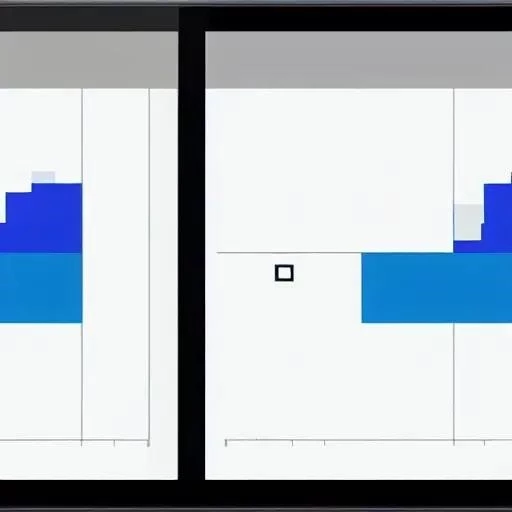
Today’s Date: 09/22/2025
The global Forex market, a colossal arena where trillions exchange hands daily, has long been the exclusive domain of institutional giants․ Yet, a quiet revolution is underway, democratizing access and empowering individual traders with unprecedented analytical capabilities․ This seismic shift is profoundly driven by Python, the versatile programming language now serving as the indispensable toolkit for navigating the intricate currents of currency exchange․ Its accessibility, coupled with a vast ecosystem of libraries, transforms raw market data into actionable intelligence, offering a potent advantage in the fast-paced world of financial trading․
Gone are the days of tedious manual data entry or relying solely on lagging indicators from traditional platforms․ Today, savvy traders are harnessing Python to programmatically fetch, process, and analyze real-time and historical forex data․ This critical ability allows for rigorous backtesting of strategies, sophisticated risk management, and the development of cutting-edge algorithmic trading systems․ By integrating insights from AI and machine learning, Python-powered solutions are not merely reacting to market movements but increasingly anticipating them, charting a course towards potentially significant gains for those willing to embrace this technological frontier․
| Resource/Method | Data Type & Access | Key Features | Common Use Cases | Official Link |
|---|---|---|---|---|
yfinance Library | Historical (OHLCV, etc․) | Free, easy-to-use, integrates with Yahoo Finance data․ | Backtesting, historical analysis, simple data fetching․ | PyPI yfinance |
forex-python Library | Real-time & Historical Rates | Currency conversion, historical rates, simple API wrapper․ | Quick conversions, basic historical data, small-scale projects․ | PyPI forex-python |
| Alpha Vantage API | Real-time & Historical (Forex, stocks, crypto) | Offers free tier (limited calls), extensive financial data․ | Algorithmic trading, complex financial modeling, research․ | Alpha Vantage |
| TraderMade Module | Real-time Streaming (OHLC) | Specialized for real-time forex data streams․ | Live trading, low-latency data analysis․ | TraderMade API |
| Broker APIs (e․g․, Exness) | Real-time & Historical (direct from broker) | Direct access to broker’s feed, often for trading execution․ | High-frequency trading, integrated trading systems․ | Exness API |
The journey to mastering forex data with Python typically begins with selecting the right tools, a decision influenced by the specific needs of a trading strategy․ For those delving into historical analysis, libraries like yfinance offer an incredibly straightforward pathway to obtaining past exchange rates, allowing aspiring quants to backtest strategies against years of market movements․ Imagine meticulously analyzing how the EUR/USD pair reacted to economic announcements over the last decade, identifying patterns that might otherwise remain hidden beneath layers of noise․ This capability, once reserved for institutional titans, is now readily available to anyone with a basic understanding of Python, leveling the playing field significantly․
Beyond historical snapshots, the true power of Python unfolds when engaging with real-time data․ Modules such as forex-python provide immediate access to current exchange rates, invaluable for monitoring market conditions as they evolve․ For more robust, high-frequency applications, specialized APIs like Alpha Vantage or the TraderMade module deliver streaming data, enabling traders to react with lightning speed to volatile currency fluctuations․ As Dr․ Anya Sharma, a leading expert in computational finance, eloquently puts it, “Accessing real-time forex data through Python isn’t just about speed; it’s about gaining a distinct informational edge, transforming guesswork into informed decision-making․” This profound shift empowers traders to build responsive, adaptive systems previously unimaginable for independent participants․
Crafting a successful trading robot or even a sophisticated analytical dashboard involves more than just data retrieval; it demands meticulous data quality checks and robust processing․ By integrating AI-driven insights, Python allows for the implementation of sentiment analysis – a cutting-edge technique cited in recent research, such as work by OF Olaiyapo in 2023 – to generate trading signals based on news and social media sentiment․ This involves processing vast quantities of unstructured text data, an arduous task rendered incredibly effective and efficient by Python’s natural language processing capabilities․ Consider a scenario where a sudden geopolitical event impacts a currency pair; a Python-powered system could instantly analyze global news feeds, gauge market sentiment, and adjust trading positions long before manual traders could even process the information․
The ultimate goal for many leveraging Python in this domain is the creation of fully automated algorithmic trading systems․ From simple moving average crossovers to complex machine learning models predicting price movements, Python provides the framework for turning theoretical strategies into tangible, profit-seeking operations․ Industry examples abound, with countless independent developers now building and deploying sophisticated bots that execute trades with precision and discipline, eliminating human emotion from the equation․ This democratization of advanced trading tools is fundamentally altering the landscape of the Forex market, fostering innovation and creating new opportunities for financial growth․
Looking ahead, the synergy between Python and Forex data is poised for even greater breakthroughs․ As AI and machine learning continue to advance, we anticipate increasingly sophisticated predictive models, enhanced risk management protocols, and more personalized trading experiences․ The journey of mastering forex data in Python is not merely about learning a programming language; it is about embracing a future where data-driven intelligence dictates market success․ For anyone aspiring to gain a significant edge in the dynamic world of currency trading, the time to dive into Python’s expansive capabilities is unequivocally now․ The potential for innovation and financial empowerment is immense, waiting to be unlocked by those ready to code their way to prosperity․
